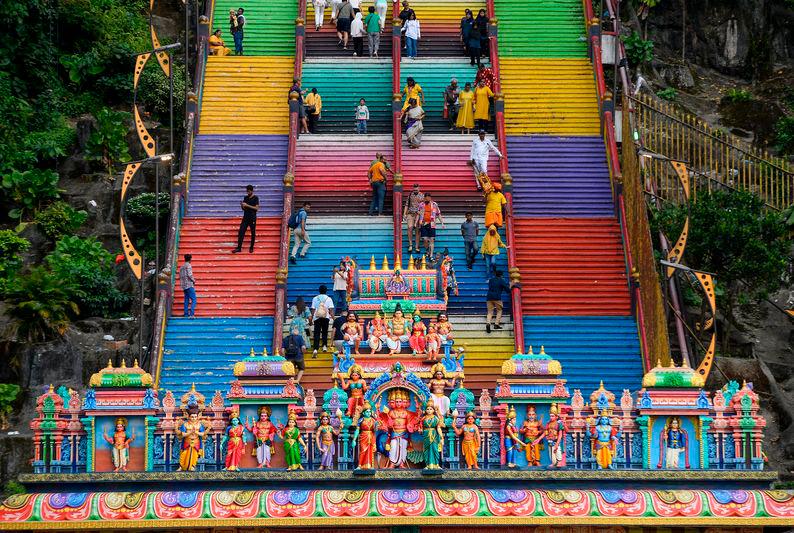CLIMBING Batu Caves is no easy feat.
One would need to climb 272 steps to reach the top and yes, it is indeed an arduous feat.
A colossal gold-painted statue of Murugan, made from reinforced concrete and 42.7 metres in height, stands near the base of steps.
So, it’s no surprise that Batu Caves was ranked the 10th most physically demanding landmark in the world.
In a report by British health club chain PureGym that ranks the top 25 most physically demanding tourist spots, Batu Caves placed 10th in the world, with an ‘exertion’ score of 40 out of 100.
Batu Caves also scored a 100 in terms of elevation change along with an average temperature of 32.4 degree Celsius.
According to the report, PureGym studied several factors including the number of steps required to experience the landmark to its fullest, the elevation change during the ascent of the landmark, and the average temperature of the location.
“These three factors were then used to create a final index score out of 100, to reveal once and for all which landmarks make us work the hardest for an unforgettable cultural experience.
“The higher the score, the more physical exertion required,” clarified the statement in the report.
When compared to countries in Asia, Batu Caves came in fourth, with Japan’s Konpira-san Shrine, Sri Lanka’s Sigiriya and Jordan’s Petra Monastery deemed more physically demanding landmarks.
The Flørli Stairs in Norway ranks in first position with an exertion score of 76, followed by the Manitou Incline in the United States with an exertion score of 63 and Poenari Castle in Romania in third with an exertion score of 58.









